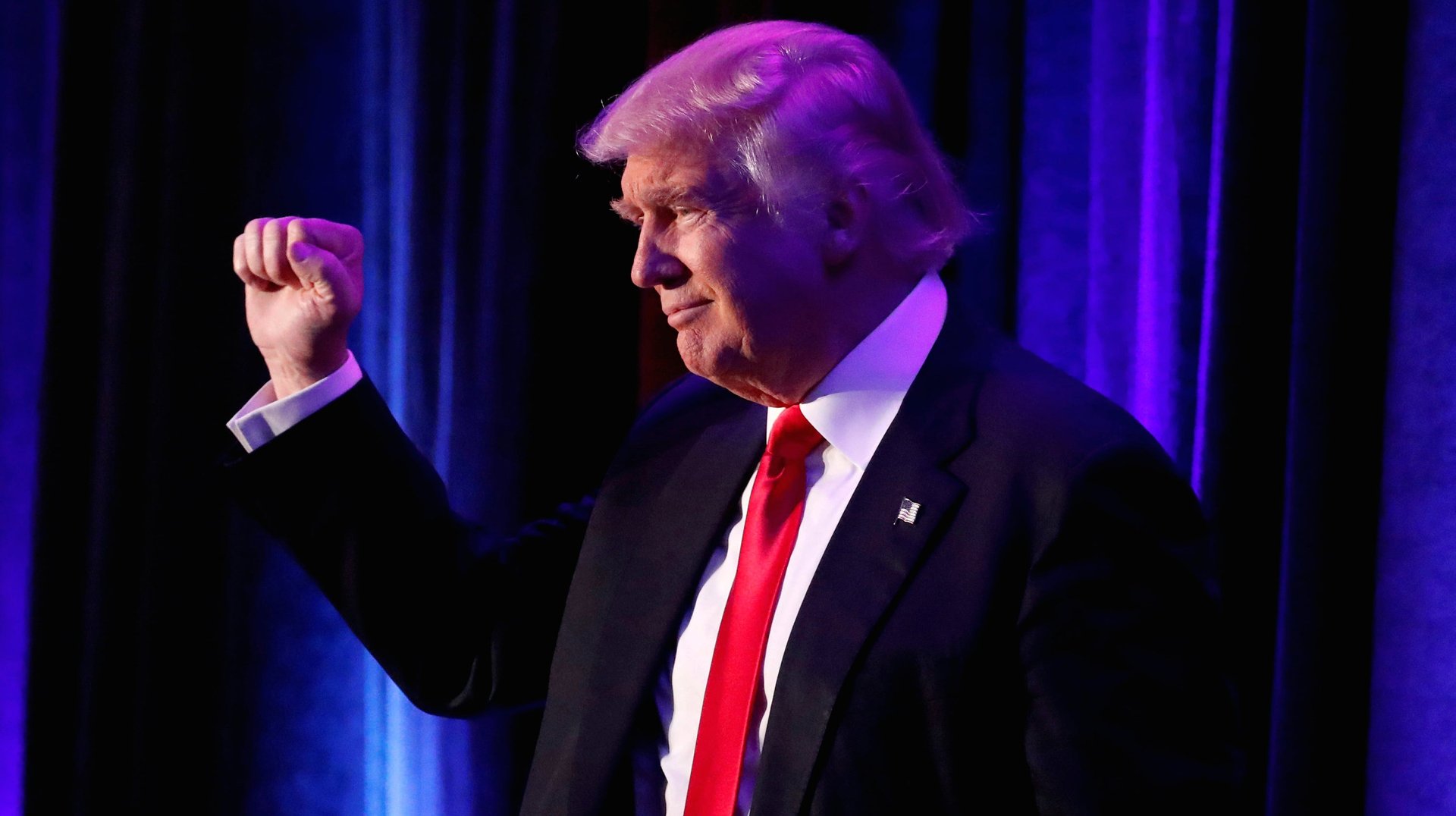Russia has tried to manipulate US elections since the Cold War—so how did they just now succeed?
For Moscow, the stakes during the US presidential election were crystal-clear. Faced with a candidate who painted the Kremlin as an adversary and obstacle to the spread of liberal democracy, the higher-ups in Moscow decided to do what they could to tilt the vote towards a more welcoming option. As such, over a year before Americans went to the polls, the Kremlin unleashed its efforts. Orders went out to penetrate the staffs of opposing campaigns. Calls went to agents abroad, assessing the possibility of infiltrating the US and spreading rumors about the favored candidate.


For Moscow, the stakes during the US presidential election were crystal-clear. Faced with a candidate who painted the Kremlin as an adversary and obstacle to the spread of liberal democracy, the higher-ups in Moscow decided to do what they could to tilt the vote towards a more welcoming option. As such, over a year before Americans went to the polls, the Kremlin unleashed its efforts. Orders went out to penetrate the staffs of opposing campaigns. Calls went to agents abroad, assessing the possibility of infiltrating the US and spreading rumors about the favored candidate.
But this wasn’t 2016—this, rather, was 1984. Cambridge historian Christopher Andrew’s 1999 magnum opus on the Mitrokhin Archive—a mountain of documents smuggled out by a former KGB archivist—details how Moscow worked tirelessly, if unsuccessfully, to tip the balance against Ronald Reagan’s reelection. As Andrew wrote in his book, The Sword and the Shield, the KGB’s headquarters “made clear that any candidate, of either party, would be preferable to Reagan.”
Of course, as Walter Mondale well knows, Moscow’s efforts came to naught, with the Kremlin watching its own empire crumble just seven years later. Contrast that, however, with everything we’ve learned over the past week about Russia’s alleged efforts to discredit Hillary Clinton’s campaign and America’s broader electoral legitimacy. From the outlines shared in the Director of National Intelligence’s recent report—which actually nods to the Mitrokhin Archive as a source—to the stupefying, sordid details of the unverified but explosive dossier on president-elect Donald Trump published this week, it’s clear that Moscow had the means, and the mettle, to carve a path for its favorite candidate to the White House. And in 2016, these efforts may have finally paid off.
Yet we must not view the events of 2016 as unprecedented. It’s important to keep in mind that Moscow’s meddling is not a new phenomenon. And it that sense, while the outcome is still mind-boggling, American politicians and intelligence officials should not be surprised that a foreign antagonist would seek to find a way to tweak and manipulate America’s democratic model for its own ends.
Besides the well-documented 1984 campaign, Andrew writes that in 1960, the KGB’s Washington agent “was ordered to ‘propose diplomatic or propaganda initiatives, or any other measures, to facilitate [John F.] Kennedy’s victory.’” (The spy’s attempt to make contact with Robert Kennedy, as Andrew noted, “was politely rebuffed.”) In 1968, as detailed in the memoir of the Soviet Union’s long-serving ambassador to the US, Anatoly Dobrynin, Moscow ordered its man in Washington to offer Democratic candidate Hubert Humphrey “any conceivable help” during the election—including financing the campaign outright. Humphrey eventually lost the race, but he can at least maintain that he refused any Soviet funding.
Then there were the events of 1948, when the Soviet Union threw its support behind third-party candidate and former vice president Henry Wallace. While Wallace’s candidacy ended up as little more than a longshot—he failed to land a single vote in the Electoral College—it’s not surprising that Moscow pushed his candidacy. This was a man who, as vice president under Franklin Roosevelt, saw both of his preferred candidates for secretary of defense and secretary of state later outed as Soviet agents
Precedent aside, however, manipulating elections has always been part of the spy game—for the United States. As UCLA historian Marc Trachtenberg wrote this week in Foreign Policy, “Since 1945, America has intervened in the internal political affairs of other countries as a matter of course.” If anything, there’s an argument to be made that electoral meddling was one of America’s primary Cold War-era tools for managing allies and hot spots alike.
Look, for instance, at recent research from Carnegie Mellon post-doc Dov Levin, whose most recent research on Washington- and Moscow-led meddling offers important context for Cold War-era practices. To wit, as Levin found, the US’s most frequent targets for election interference were nominal allies, including Italy and Japan. (Italy, unfortunately, also tied with Finland for the nation in Levin’s tally with the greatest number of elections targeted by Moscow, following only West Germany.) Likewise, per Levin’s research, Moscow’s meddling actually plummeted in the mid-1970s, bottoming out by the time Leonid Brezhnev’s gerontocracy passed. And while the US’s vote-spinning efforts—as far as historians know, at least—peaked in the early 1950s, Washington also increased its efforts during the 1970s before plateauing under Reagan.
And yet, despite all of this shared history, it appears 2016 may well be the first time in which a foreign power’s efforts proved so fruitful. Even if the allegations in the recent Russia-related dossier on Trump prove to be exaggerated or even false, this is still a president-elect who publicly pressed Russia to hack his political rivals. It appears that Moscow’s previous attempts had been missing one key ingredient: a candidate willing to take the Kremlin’s aid and run with it—all the way to the White House.